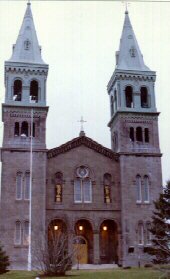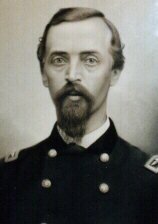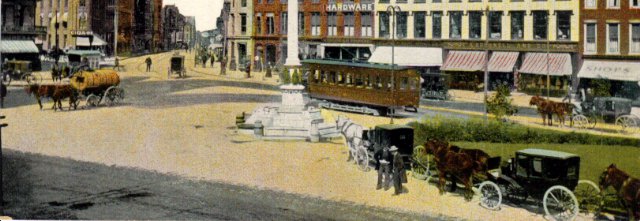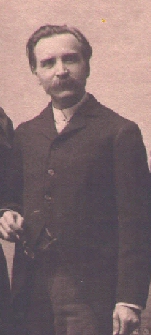Theodore Gegoux (1850-1931)
Began in 1925, completed in 1926. With a family page added in 1927.
 Baptized in the Roman Catholic Church at Beauharnois, P. Quebec. When at the age of four, his father died {Jean François Gegoux was actually buried on January 19th, 1857 at St. Louis de Gonzgue, P. Quebec. Theodore would have been six years old at this time}.
Baptized in the Roman Catholic Church at Beauharnois, P. Quebec. When at the age of four, his father died {Jean François Gegoux was actually buried on January 19th, 1857 at St. Louis de Gonzgue, P. Quebec. Theodore would have been six years old at this time}.
 He replied, "No sir, this is the first negative I ever saw". "Well!, Well!", turning to his wife said, "He can do it better than either of us." And to prove what he said was true he put down his retouching pencil and would not retouch an other negative. So the apprentice became a professional retoucher in one day and could have gone to New York City and commanded a $25.00 a week salary and though there was but a verbal agreement between the two men, it was adhered to strictly and he remained at his task till the end of the year.
He replied, "No sir, this is the first negative I ever saw". "Well!, Well!", turning to his wife said, "He can do it better than either of us." And to prove what he said was true he put down his retouching pencil and would not retouch an other negative. So the apprentice became a professional retoucher in one day and could have gone to New York City and commanded a $25.00 a week salary and though there was but a verbal agreement between the two men, it was adhered to strictly and he remained at his task till the end of the year.

 But now a problem arose in his mind which had to be solved and that was, Should he consider the bonds of matrimony or lead a batchelor's life? Having arrived at an age (31) when such a question is paramount in a young man's mind, caused him much meditation. If he decided to marry he must find a mate who could pass examination. First, she must have perfect health, and must have talent for the arts of drawing and painting, especially in discerning colors. The above requirements, strange to say, were closely approximated by a young lady, who happened to attend one of his exhibitions of paintings. And having managed to receive an introduction, took the liberty to ask many questions apropos of the arts, and suggested that she try her hand at drawing and painting, that which she hesitated to do. Being afraid, less she made a failure of it.
But now a problem arose in his mind which had to be solved and that was, Should he consider the bonds of matrimony or lead a batchelor's life? Having arrived at an age (31) when such a question is paramount in a young man's mind, caused him much meditation. If he decided to marry he must find a mate who could pass examination. First, she must have perfect health, and must have talent for the arts of drawing and painting, especially in discerning colors. The above requirements, strange to say, were closely approximated by a young lady, who happened to attend one of his exhibitions of paintings. And having managed to receive an introduction, took the liberty to ask many questions apropos of the arts, and suggested that she try her hand at drawing and painting, that which she hesitated to do. Being afraid, less she made a failure of it.
| Father: | Jean Francois Gegoux, Dead |
| Mother: | Marie Josephete Leduc, Gegoux, Dead |
| Justine: | Died in infancy |
| Xavier: | Died 69 years of age |
| Honore: | Died 72 years of age |
| Christine: | Died 61 years of age |
| Mathilda: | Died 49 years of age |
| Adele: | Died 52 years of age |
| Rose: | Died 17 years of age |
| Joseph: | Died 56 years of age |
| Louis: | Died 63 years of age |
| Theodore: | Alive at 77 years of age |
| Abel: | Died at 19 months of age |